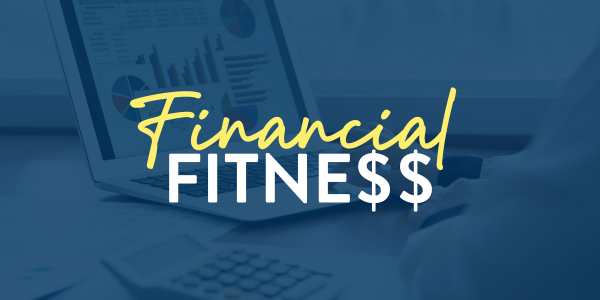
April brought a mix of financial headlines—from new global tariffs to shifting trends in home financing. But don't worry, we've sorted through the noise to bring you practical tips and timely insights. In this issue, we're covering mortgage options for self-employed buyers, how to choose the right dental insurance, pet-friendly travel trends, and what tariffs could mean for your wallet. Whether you're planning your next move or just keeping an eye on your finances, there's something here for you.

Home Financing
Self-Employed? Here's How You Can Qualify for a Mortgage
If you're self-employed, you already know that buying a home can come with a few extra hurdles. Traditional mortgage guidelines often don't reflect the realities of running your own business—but that doesn't mean homeownership is out of reach.
There are several flexible mortgage options designed just for self-employed individuals, including:
Bank Statement Loans:
Instead of tax returns, these loans allow you to qualify using 12 to 24 months of personal or business bank statements. It's a great option if you have strong cash flow but write off a lot of expenses.
Asset-Based Loans:
These allow you to use assets like savings, investments, or retirement funds to demonstrate financial stability—ideal for those with irregular income but strong reserves.
Traditional Income Options:
If your tax returns show consistent, sufficient income, traditional mortgage programs may still be a fit.
Being self-employed doesn't mean you have to navigate the mortgage process alone. With the right loan program and guidance, you can confidently take the next step toward homeownership.
Source: apmortgage.com
Insurance
Choose a Dental Insurance Plan That Doesn't Bite
If you're new to dental insurance, locating the right coverage can be confusing, especially if you don't have an employer-sponsored plan. However, we all want an attractive smile (and no cavities!), so here are the basics of dental insurance.
Most policies divide your coverages into the following three areas.
Preventative and diagnostic services are included in almost every plan, as they help prevent the need for restorative services. These include checkups, cleanings and annual X-rays. If coverage doesn't pay for this 100%, your copay should be affordable.
If you need a filling or a root canal, insurance that covers basic restorative services should make this affordable. Most plans cover at least 50% of this cost.
If you need a crown, bridge, or implant, this bumps you into the major restorative services bracket. Some plans offer no coverage, while others will cover a percentage.
If your employer offers dental insurance, this is probably your best choice. This is because major insurers often negotiate pricing. If you're self-employed or a contractor, you may need to shop for coverage. Need help? Call or email your local APM Loan Advisor and they will refer you to an agent so you can review your options.
Source: verywellhealth.com
In the News
Fur Flies First Class: More Pets Take to the Air and Sea
More than ever, pet owners are sharing their vacations with their dogs and cats. According to the American Pet Products Association, around 90% of family pets have enjoyed family vacations with their owners.
Instead of boarding pets at kennels or hiring sitters, over 85% of pet owners have taken their cat or dog along with them on road trips. Almost as many have taken their fur kids on planes, paying $100-$150 for a cabin pass.
Indulgent dog owners are checking out Bark Air, a new public charter designed for dogs. Canine passengers can roam around the cabin, enjoying perks like toys, treats and even scented towels. Ticket prices could cause some human howling though, as domestic fares are around $6,000 and international ones hitting $8,000 per pup and parent.
Planning to "flea" later this year? Consider "em-barking" with over 200 other dogs on a six-night cruise from Florida to Mexico. A variety of room types are available for up to four guests and their canine companions, from economical interior to premium balcony options.
Even with steep price tags, research shows that pet ownership promotes financial responsibility. Nearly 2 in 5 Americans (39%) associate pet ownership with good money habits, with 36% say having a pet motivates them to reach their money goals.
Source: empower.com
Credit and Consumer Finance
How Retailers are Reacting to Tariffs
This month's introduction of global tariffs is making headlines for several reasons. One that you may have already encountered is a receipt from an overseas company with an additional charge labeled "tariff". Other businesses, both large and small, have already announced higher, tariff-inclusive prices or warned customers that these will come into effect soon.
Some overseas companies, including Swiss luxury watchmakers and Razer laptops, have gone as far as to stop selling to American consumers. One UK-based lingerie site advised U.S. visitors that they had paused shipments to the U.S. as they "get clarity on the new tariff regime".
Other retailers are going the pre-tariff sale route, so you may want to search for these online and at shopping centers. However, if you're wondering if you should stock up on certain goods before tariffs increase prices, this may be more difficult than it sounds.
For example, if a business has a large amount of pre-tariff inventory, this may keep their prices steady for weeks or months. And, considering the number of tariff flip-flops we've seen this month, predicting prices may be nearly impossible...at least for the time being.
Source: cbsnews.com
Did You Know?
Strategies For Investing in Bear Markets
As stocks have enjoyed a bull market since 2023, brokers and investors alike have been feeling optimistic about the sustained growth during the past two years. However, as of early April, stocks have plummeted, and recovery has seesawed. This has investors wondering about a future bear market and how to manage their portfolios accordingly.
While history has provided some strategies for minimizing loss during a bear market, the first rule is simple: don't panic. Reacting impulsively often causes avoidable losses. The next step is to review your portfolio.
Investing in defense and health sectors is often recommended, as are other less volatile areas. However, this doesn't mean that moving 100% of your funds to low-risk, lower-reward stocks is your best move. Tim Thomas, CIO of wealth management firm Badgley Phelps, described his recommended moves: "You've got to have a foot in both camps. It's really important not to get too bearish or too defensive."
If you're concerned about your portfolio or are considering working with a broker, contact your local APM Loan Advisor near you for a referral. Investing doesn't have to be "unbearable"!
Source: money.com







